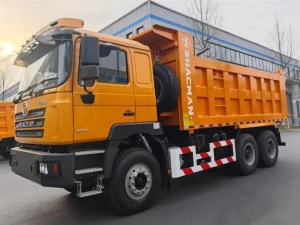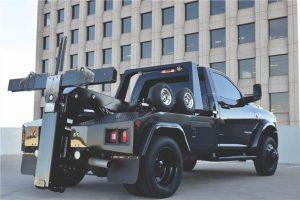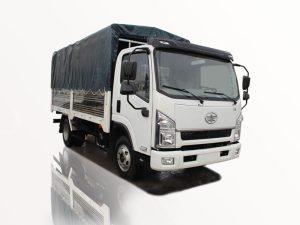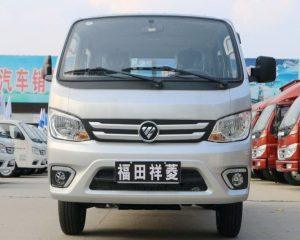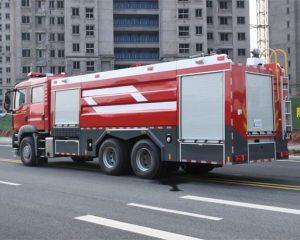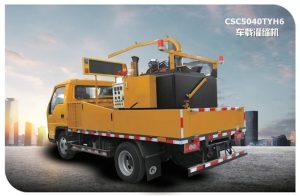Monday to Saturday - 8:00 -17:30
Understanding the Fire Chief Truck: A Comprehensive Guide
When it comes to firefighting and emergency response, one of the most critical pieces of equipment is the fire chief truck. This unique vehicle plays an essential role in coordinating firefighting strategies, ensuring safety, and rescuing individuals in emergencies. In this article, we explore the various aspects of the fire chief truck, its features, functions, and its importance in modern firefighting.
What is a Fire Chief Truck?
A fire chief truck is a specialized vehicle utilized by fire chiefs and command officers in the firefighting services. Unlike standard fire engines or ladder trucks, fire chief trucks are often outfitted for command and control, allowing chiefs to oversee operations effectively during emergencies.
Key Features of Fire Chief Trucks
Fire chief trucks are equipped with several features tailored to the needs of fire chiefs.
- Command Center: Equipped with communication systems and monitoring equipment for effective management of emergency situations.
- Storage Space: Designed to carry essential firefighting gear, medical supplies, and tools necessary for emergency management.
- Emergency Lights and Sirens: High-visibility emergency lights are crucial for alerting other vehicles and pedestrians during responses.
- Four-Wheel Drive: Many fire chief trucks come with four-wheel drive capability to navigate rough terrains.
Types of Fire Chief Trucks
There are several types of fire chief trucks, each catering to different needs and scenarios.
1. Command Vehicles
Command vehicles are primarily focused on providing a mobile command center. They are usually equipped with two-way radios, laptops, and sometimes a satellite communication system.
2. Utility Trucks
These trucks serve a dual purpose. They can function as a command center and also carry out firefighting tasks with the addition of water tanks and hoses.
3. Brush Trucks
Brush trucks are designed for wildland firefighting. They are often smaller and can maneuver in rugged terrains where traditional trucks might struggle.
4. Squad Trucks
These trucks are smaller than conventional fire engines and typically transport a group of firefighters. They often contain firefighting equipment, medical supplies, and rescue tools.
The Importance of Fire Chief Trucks in Emergency Response
The role of fire chief trucks is vital in improving the effectiveness of emergency responses.
Enhanced Communication
With a command vehicle, fire chiefs can communicate directly with their teams and coordinate efforts across multiple units efficiently.
Safety and Strategic Planning
Fire chief trucks allow for better situational awareness. Chiefs can assess and strategize responses without being in immediate danger.
Efficient Resource Management
With better management of resources, situations can be handled more effectively. Fire chiefs can direct units to specific locations based on live data and visual reports.
Equipment Typically Found in Fire Chief Trucks
Equipping a fire chief truck requires careful consideration of the tools that will allow for optimal service in various emergencies.
| Equipment | Purpose |
|---|---|
| Radios | For communication with other units and command centers. |
| GPS Devices | For navigation and incident mapping. |
| First Aid Kits | To provide immediate medical assistance. |
| Fire Extinguishers | To tackle small fires prior to larger units arriving. |
| Light Towers | To illuminate areas in low light conditions. |
Practical Tips for Choosing a Fire Chief Truck
Selecting the right fire chief truck is essential for effectiveness and efficiency in emergency response. Here are some tips:
1. Assess Department Needs
Understand the specific needs of your fire department. Consider the types of emergencies most common in your area.
2. Evaluate Vehicle Features
Look for trucks with modern communication systems, sufficient storage, and all-terrain capabilities.
3. Consider Budget Constraints
Buying or upgrading fire chief trucks can be expensive. Determine a budget that aligns with the overall department finances without compromising effectiveness.
4. Prioritize Reliability
Choose manufacturers with a track record of reliable vehicles. Gather feedback from other departments that use similar trucks.
5. Plan for Maintenance
Ensure that there’s a robust maintenance plan in place to keep the vehicles in excellent working condition.
Fire Chief Trucks and Community Engagement
Fire chief trucks are not just vital during emergencies; they can also play a role in community outreach and education.
Public Demonstrations
Fire departments can use fire chief trucks for demonstrations that inform the community about fire safety and emergency preparedness.
School Programs
Fire chiefs can conduct school visits, using their vehicles to engage children and teachers about fire safety measures.
Open House Events
Hosting open house events where community members can explore fire chief trucks fosters connection and education among residents.
Environmental Considerations in Fire Chief Truck Operations
Modern firefighting recognizes the importance of sustainability. Fire chief trucks can also be part of environmentally responsible practices.
Fuel Efficiency
Selecting trucks with better fuel efficiency can reduce the department’s carbon footprint.
Emissions Standards
Opt for fire chief trucks that comply with the latest emissions regulations and standards, contributing to cleaner air in the community.
Water Conservation
Use technology that allows for more efficient water usage during firefighting efforts, reducing wastage and environmental impact.
FAQs about Fire Chief Trucks
1. What is the primary function of a fire chief truck?
The primary function of a fire chief truck is to serve as a mobile command center, allowing fire chiefs to manage firefighting operations and coordinate resources effectively during emergencies.
2. How does a fire chief truck differ from a regular fire engine?
A fire chief truck is more focused on command and control, while a regular fire engine is primarily designed for firefighting, carrying hoses, water tanks, and fire extinguishing equipment.
3. What types of equipment can be found in fire chief trucks?
Fire chief trucks typically include communication devices, first aid kits, GPS devices, fire extinguishers, and other critical emergency response tools.
4. Can fire chief trucks be used for community outreach?
Yes, fire chief trucks can be used in community outreach efforts, such as school visits and public demonstrations, to educate the community about fire safety and prevention.
5. What should departments consider when purchasing a fire chief truck?
Departments should assess their needs, evaluate the vehicle’s features, consider budget constraints, prioritize reliability, and have a solid maintenance plan in place.
6. How can fire chief trucks contribute to environmental sustainability?
Fire chief trucks can contribute to sustainability through features like fuel efficiency, emissions compliance, and water conservation practices during firefighting efforts.


